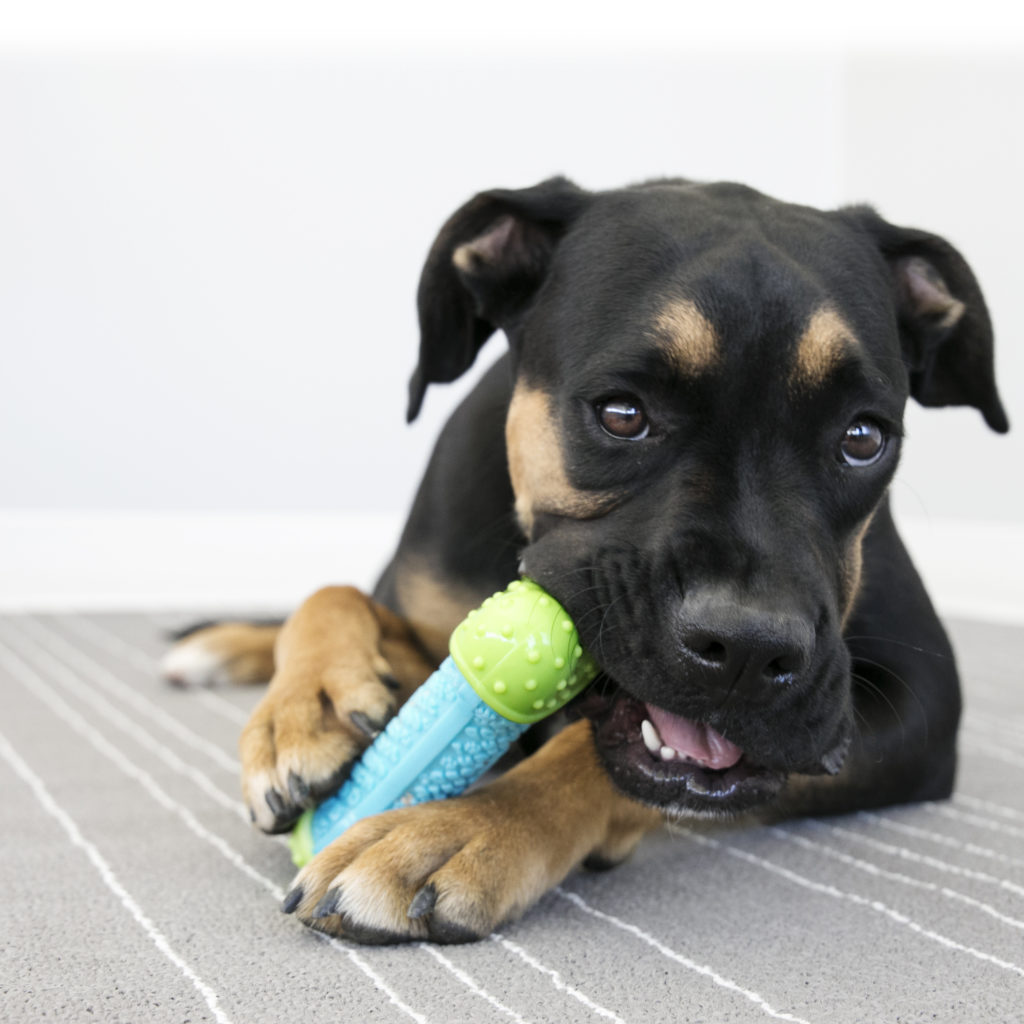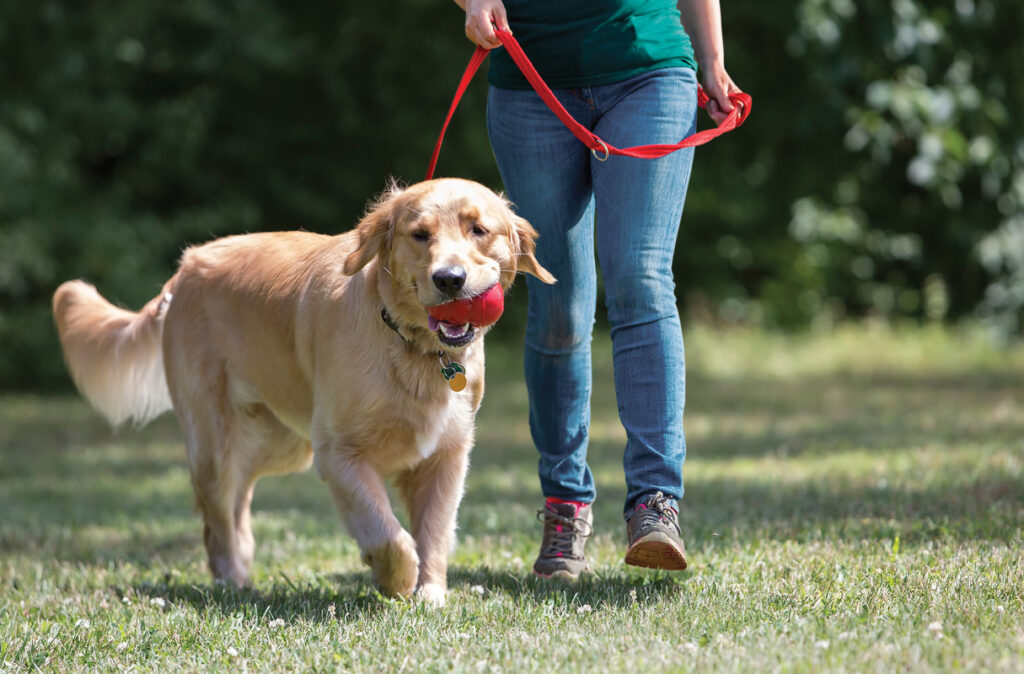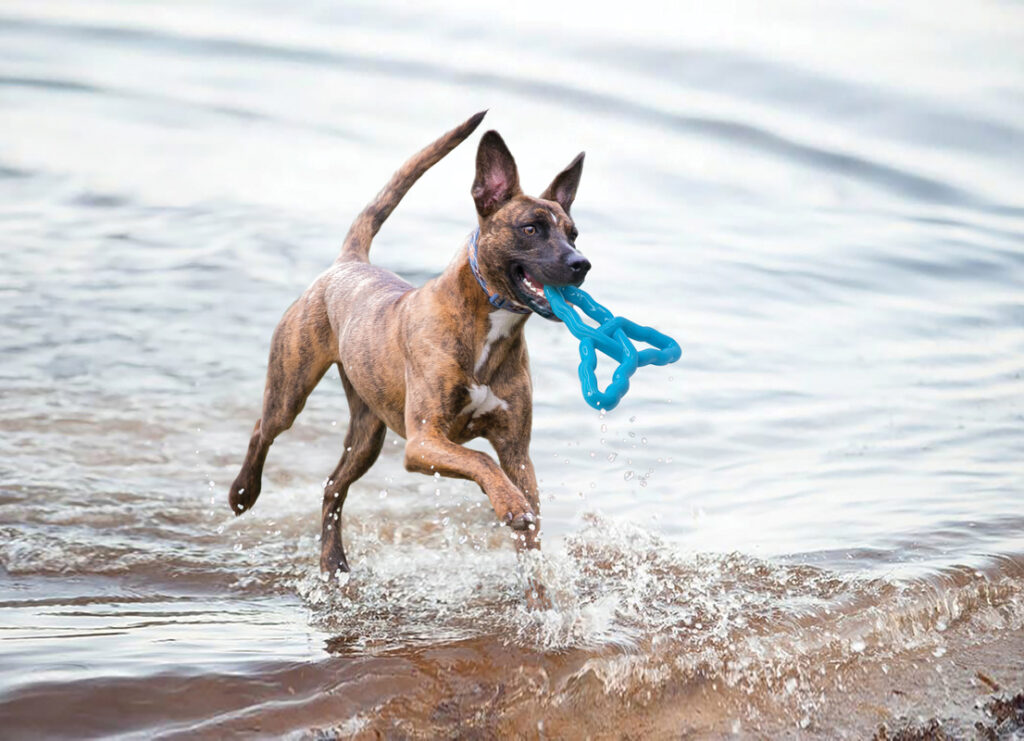As a pet parent, you love your dog as a member of the family. You love to play with them, take them on walks, and cuddle with them. As you cuddle with your dog, though, their breath may knock you right out! Brushing your dog’s teeth is a surefire way to prevent bad breath from making cuddle moments unpleasant. This habit is also a key preventative measure for any oral health issues as they grow older.
Continue reading as we discuss how to maintain your dog’s teeth and when to reach out to a vet for more guidance.
Oral Health in Dogs
One of the most overlooked parts of canine care is their oral health. Unfortunately, overlooking oral health throughout your dog’s life can cause dental and health issues later down the road. You keep your dog’s coat gleaming, their nails nice and short, and their ears squeaky clean. Keeping their teeth shiny and clean is just another aspect of their grooming regime.
Just like people, your dog’s teeth can form plaque as a result of saliva, food particles, and bacteria. This plaque and bacteria can cause your dog’s breath to smell rather unpleasant.
If this plaque is not removed regularly by brushing, it can harden into calculus. Once plaque hardens into tartar, it can only be removed by a veterinarian. In these cases, dogs are often put under anesthesia.
These cleanings can be costly, and your dog will certainly not enjoy them. Plaque can also cause the gums to become inflamed. This inflammation, called gingivitis, is reversible with proper dental hygiene.
Periodontal Diseases in Canines
As our dogs grow older, their risk of periodontal diseases increases. In fact, up to 80% of dogs will have some varying degree of periodontal disease. Periodontal disease is a disease of the gums, which can cause the gums to recede. This receding can cause teeth to become loose and require removal.
Diseased gums also invite dental infections. This can create extra work for your dog’s immune system as they can become an easy pathway for germs to enter your dog’s bloodstream. They could quickly become sick. Your veterinarian can also give you additional information on how proper oral hygiene can help prevent further health issues.
Tooth Pain
Tooth pain is not a fun time for our furry friends. Since they cannot speak and tell us what is wrong, they may show that they are in pain by pawing at their mouth, eating less or using one side of their mouth to chew, and excessive drooling.
When your dog is experiencing dental-related pain, they may also be agitated and display aggressive behaviors like nipping or growling if you stroke their head or mouth area.
They also may not enjoy treats as much as they used to. As a parent of a treat-loving dog, you will certainly know that something is wrong when your pet is not interested in their cookies and snacks.
Being proactive and taking care of your dog’s oral health while they are young not only makes it easier to brush their teeth but also prevents any issues that may come with periodontal disease. Evidence also supports that daily brushing is the best way to combat plaque from accumulating on your dog’s teeth.
If tooth brushing is something that you are beginning with your older dog, you’ll want to make sure that you consult your veterinarian for an initial dental check-up. They may recommend a professional cleaning as a start to improving their dental health. This will also give you a clean slate to work with as you work to make tooth brushing a more consistent part of your dog’s grooming routine.
How To Brush Your Dog’s Teeth
If you have not been brushing your dog’s teeth since they were a puppy, it may take some practice, but soon your dog will be showing their pearly whites with every bark.
Your dog is not going to naturally open their mouth wide and be ready for a teeth cleaning as you would. They will likely open up for a treat or two, though.
When brushing your dog’s teeth, it’s essential to keep things calm and positive. You do not want your dog to associate getting their teeth brushed with negative feelings, as they will not want you to touch the area around their head and mouth if they find teeth cleaning unpleasant.
Start on a Positive Note
Tooth brushing is a process that may take your dog a little while to get used to. Anytime you brush your dog’s teeth, make sure that both of you are in a calm and positive environment. In the beginning, pet around your dog’s head and mouth while offering praise and treats.
Once your dog is used to your hands being around their mouth, you can gently put a gauze-wrapped finger under their cheek and rub along their gum line. Of course, keep rewarding your dog with lots of praise and their favorite treats.
We want this activity to be associated with positive things. When you start rubbing your dog’s teeth with the gauze, you can start with their top teeth and move from the front to back. Then move to their bottom teeth and move from the front to the back.
Once your dog has gotten used to having their gums and teeth rubbed, you can introduce using toothpaste.
Picking a Toothpaste Geared To Dogs
There are flavors for dogs that they will find pleasant, like chicken or peanut butter. Using specially designed dog toothpaste is crucial because they are formulated differently than human toothpaste. Dogs do not need fluoride as people do. Plus, some dog-specific toothpastes contain enzymes that help remove bacteria and plaque.
It’s safe to assume that your dog will swallow a good bit of the toothpaste, and ingesting too much fluoride can be dangerous for your dog — another reason for using specially formulated products for your dog. Look for the Veterinary Oral Health Council (VOCH) seal of approval when you are looking for oral health products to ensure that they are safe for your dog.
Using the toothpaste on your gauze-covered finger, continue to brush along your dog’s gum line with the toothpaste. Continue this method of cleaning for a few weeks until your dog gets used to the toothpaste.
After this, you can introduce using a toothbrush instead of using your gauze-covered finger. Use a soft-bristled toothbrush; a specially designed-dog toothbrush will be your best choice. Continue to praise and reward your dog as you continue this process.
The ultimate goal is to brush your dog’s teeth daily. If they will tolerate having their teeth brushed every day, it is okay! Any brushing is better than no brushing at all, but trying to fit in at least a few brush sessions a week. You can also consult your veterinarian for any tips and tricks they may have for incorporating brushing into your dog’s routine.
Oral Health Treats and Toys
In lieu of regular brushing, some dog parents may want to give their dogs treats and toys designed to aid in oral health. Chewing is beneficial for dogs because it helps with plaque removal. Although these treats may aid temporarily in your dog’s breath, your dog will often consume them too quickly to be effective in removing plaque from their teeth.
If you give your dog toys designed to be chewed for a long time, make sure that they are not too hard. If a toy is too hard, it may damage your dog’s teeth. If you are not able to cause a mark on the toy with your fingernail, the toy is too hard, and it should be avoided.
Caring For Your Canine’s Canines
Keeping your dog’s oral health in mind is important as a preventative measure. Getting them used to teeth brushing is the best way to accomplish this. It’s important to have access to the best veterinarians when it comes to any questions you may have about brushing your dog’s teeth, as well as any other oral health questions you may have.
Preventative care is a big deal to us at the KONG Club. That’s why with our KONG Club app, you can contact the vets at AskVet. We want the best for your furriest family member. So, our vets are available 24 hours, seven days a week, for any questions you may have about your dog’s teeth. No appointment is ever needed!
Sources:
Tooth brushing inhibits oral bacteria in dogs | NCBI
Dental Home Care Instructions | Animal Health Topics | UC Davis School of Veterinary Medicine
Instructions For Ear Cleaning In Dogs | VCA Animal Hospitals



